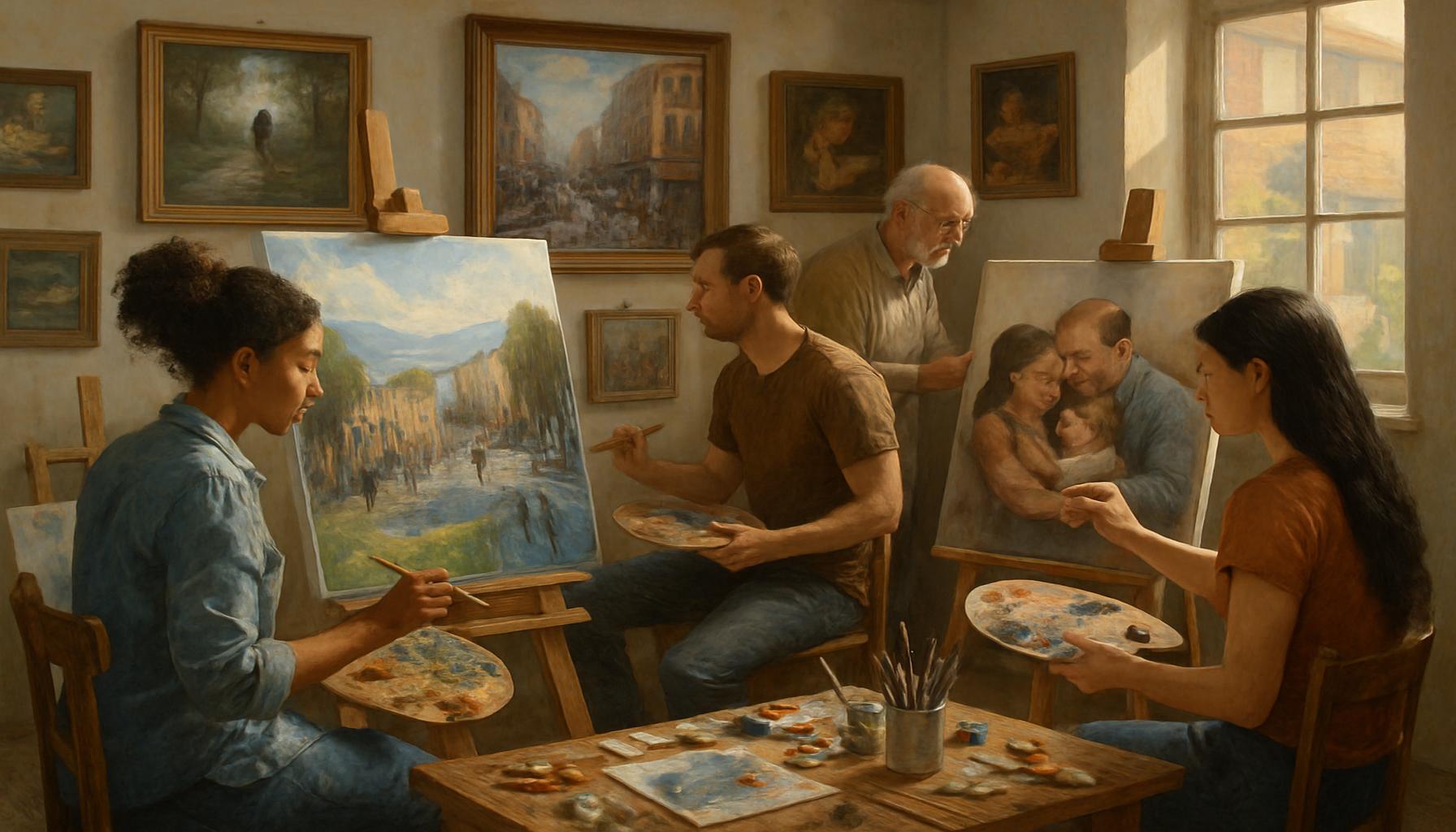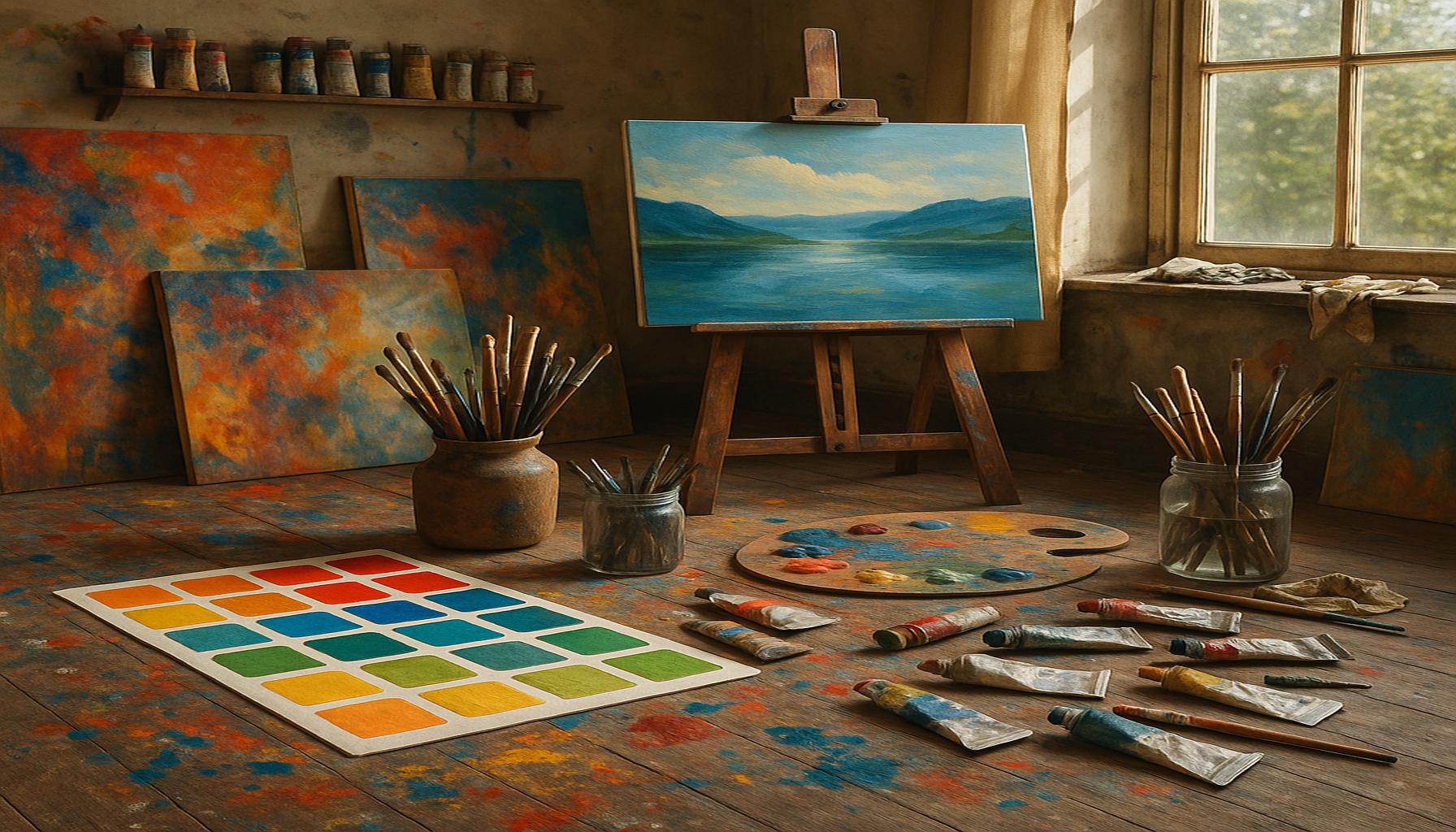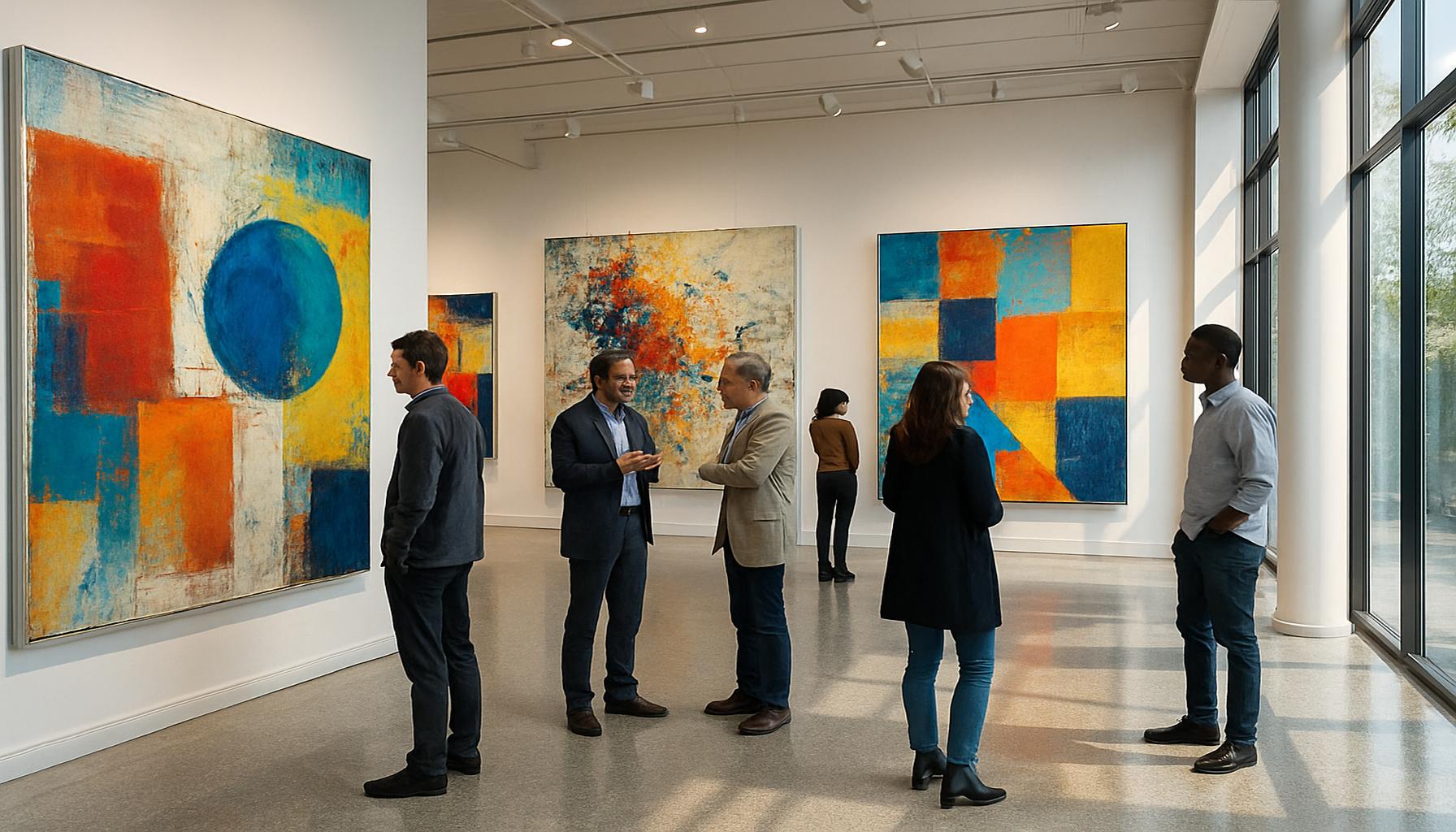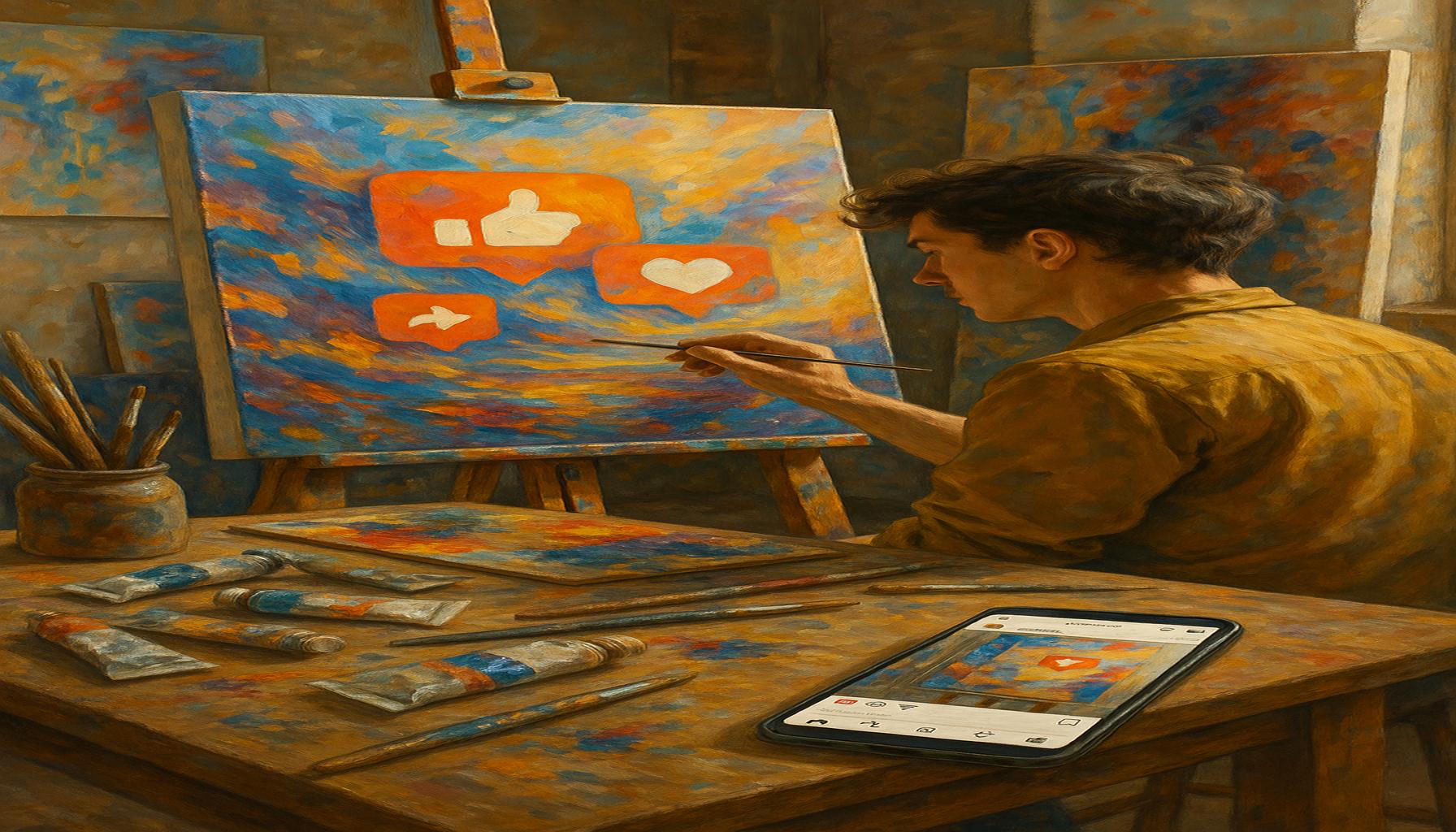Painting as a Form of Storytelling: How to Convey Narratives Through Art

The Power of Visual Storytelling Through Painting
Throughout history, **painting** has served as a profound medium for storytelling. Artists have conveyed emotions, events, and cultural moments, transforming canvas into a powerful narrative device. This unique blend of visual and narrative arts invites viewers to engage with stories on a deeper level, offering insight into the human experience through the eyes of the artist.
What makes painting an extraordinary form of storytelling? Here are some key elements that contribute to the narrative strength of painting:
- Visual Symbols: Artists often employ specific colors, shapes, and objects to signify themes and emotions. For instance, the use of red in paintings frequently symbolizes passion or anger, while blue may evoke feelings of calmness or melancholy. In the iconic painting “American Gothic” by Grant Wood, the stern expressions and the pitchfork in hand symbolize American perseverance and rural values, encapsulating a narrative of hard work and tradition.
- Composition: The arrangement of elements within a painting guides the viewer’s eye and influences how the narrative is perceived. A triangular composition, for example, can create a sense of stability and focus, while chaotic layouts may evoke confusion and tension. Leonardo da Vinci’s “The Last Supper” expertly blends composition with storytelling; the placement of figures around the table not only serves to depict a pivotal biblical moment but also highlights individual reactions, enriching the overall narrative.
- Historical Context: Many works are reflective of the social and political climates of their time, offering profound insight into a particular era. Paintings like Diego Rivera’s murals capture the essence of Mexican society in the early 20th century, addressing issues of class struggle and cultural identity. These historical narratives resonate with viewers, inviting them to explore the past while reflecting on contemporary issues.
Consider famous examples that illustrate these ideas:
- The emotional depth in Edvard Munch’s “The Scream” captures the existential dread of the modern human experience, portraying a figure overwhelmed by unseen anxieties, thereby inviting a conversation about mental health and societal pressures.
- The storytelling layers of Hieronymus Bosch’s “The Garden of Earthly Delights” present an intricate journey from paradise to damnation, prompting viewers to contemplate morality and human desire within an elaborate visual framework.
- The narrative progression in J.M.W. Turner’s landscapes often depict the awe and terror of nature, drawing on elements of the sublime to evoke a sense of wonder and humility that resonates with viewers’ own experiences of the natural world.
In each of these cases, painting transcends mere representation to convey vibrant tales and evoke compelling emotions. As we delve deeper into how to convey narratives through art, we uncover the intricate ways in which paintings can resonate with our shared human experience, inviting continuous exploration and engagement.
Thus, as spectators, we are not just passive observers; we become a part of the unfolding narrative, invited to interpret, question, and connect with the stories that each painting tells. This engagement compels us to reflect on our own lives and the societal landscapes we navigate, making painting a timeless conduit for catharsis and discourse.
DISCOVER MORE: Click here to dive into the art of storytelling
Key Elements of Narrative in Painting
To fully appreciate how painting functions as a form of storytelling, it is essential to understand the various components that contribute to a painting’s narrative depth. Artists skillfully integrate visual elements, emotional context, and audience interaction in their works, weaving together complex stories that resonate with viewers. Here are some critical elements that shape the narratives embedded within paintings:
- Character and Setting: Just like in literature, characters and settings play vital roles in paintings. The subjects depicted often reflect broader social or personal narratives. For instance, in Andrew Wyeth’s “Christina’s World,” the portrayal of Christina juxtaposed with the expansive but isolated landscape tells a story of longing and determination, inviting viewers to ponder her experience.
- Color Palette: The selection of colors in a painting can evoke specific feelings and set the tone of the narrative. The use of warm colors might create a sense of intimacy, while cooler tones can evoke isolation or sorrow. Consider the vibrant hues in Frida Kahlo’s self-portraits, which not only reflect her personal pain and struggle but also express her cultural identity, thus enriching the narrative framework of her art.
- Symbolism: Artists frequently employ symbols to convey deeper meanings in their work. Every item, gesture, or color can serve as a metaphor for larger themes. For example, in Grant Wood’s “American Gothic,” the pitchfork symbolizes hard work and resilience, while the harsh expressions on the faces of the farmer and his daughter reveal the sternness of rural life in America. This layered symbolism invites viewers to unearth the narratives residing within the painting.
- Movement and Rhythm: The visual flow within a painting can guide the viewer’s eye and evoke a sense of action or stillness. The dynamic interplay of lines and shapes can create tension or harmony, drawing the audience into the unfolding story. In works like Jackson Pollock’s drip paintings, the chaotic movement captures the raw energy of emotions, engaging viewers in an artistic dialogue that transcends traditional storytelling.
As we explore these elements, it becomes clear how each painting serves as a unique narrative vessel, inviting viewers to delve into both the heart of the artwork and the larger cultural conversations it represents. By engaging with the artist’s choices and the resulting visual cues, audiences can uncover layered meanings, making the act of viewing a painting an interactive experience.
In this way, each brushstroke becomes a word, and each color an emotion—a testament to the profound relationship between painting and storytelling. Delving deeper into this relationship reveals not only the stories told by the artists but also the personal narratives that emerge from the viewers themselves. This mutual exchange continuously enriches the landscape of art and its power to communicate.
Painting as a Form of Storytelling: How to Convey Narratives Through Art
As we venture deeper into the realm of painting as a storytelling medium, it becomes essential to understand the various elements that enable artists to convey rich narratives through their work. Every brushstroke, color choice, and composition serves as a vehicle for emotion and message, allowing viewers to connect with the story on a profound level.One paramount aspect of storytelling in painting is the use of symbolism. Artists often incorporate symbols to represent broader themes and ideas, allowing viewers to interpret the artwork through their unique lens. For instance, a solitary figure in nature may symbolize loneliness or self-reflection, while intertwined vines might signify growth and connections. By embedding symbols within their paintings, artists invite audiences to engage in a dialogue about the layered meanings behind the visual narrative.Equally important is the role of composition and lighting in guiding the viewer’s experience. The arrangement of elements within a painting can create a sense of tension or harmony, drawing the eye to focal points that reveal key aspects of the narrative. For example, dramatic lighting may emphasize a character’s emotions, showcasing their inner turmoil or joy, effectively crafting a dramatic visual narrative. Through this careful orchestration of visual components, artists can create captivating stories that resonate with viewers.Furthermore, the technique of visual storytelling allows for a narrative structure similar to literature and film. Artists employ sequential scenes or recurring motifs to unfold a story over time. Viewers can immerse themselves in the artwork, following the story arc through the visual cues provided by the artist. This engages the audience, encouraging them to decipher the plot as they would with a novel or screenplay.Incorporating cultural references also enriches the storytelling aspect of painting. By drawing from historical contexts, folklore, or personal experiences, artists create a tapestry of narratives that reflect societal values and human experiences. Such references can bridge gaps between different cultures, inviting a global audience to partake in storytelling that transcends time and space.As we analyze how paintings convey narratives, it becomes evident that this artistic medium holds the power to evoke emotions and provoke thoughts in ways that words often cannot. By blending symbolism, composition, and cultural references, artists continue to illuminate the human experience, inviting viewers to reflect on their own stories within the beautiful frameworks of art.
| Category 1 | Category 2 |
|---|---|
| Symbolism in Art | Artists use symbols to convey deeper meanings, enriching narratives and inviting interpretation. |
| Composition Techniques | Strategic layout and lighting highlight emotions, guiding viewers through the storytelling process. |
| Cultural References | Integrating cultural narratives creates a rich narrative tapestry, appealing to a diverse audience. |
This exploration reveals that painting is not merely an aesthetic pursuit but a dynamic method of storytelling that can traverse boundaries, evoking shared human experiences. Through thoughtful techniques, artists transform their canvases into compelling narratives that resonate with audiences in unique and profound ways.
DISCOVER MORE: Click here to learn how to knit sustainably
The Role of Culture and Context in Artistic Narratives
Understanding that paintings are not created in a vacuum is crucial for appreciating the rich narratives they encapsulate. Each artwork is influenced by its historical, cultural, and social context, allowing artists to communicate their stories more profoundly with the audience. The interplay of culture and context not only shapes the narrative but also elevates each painting into a dialogue with contemporary society. Here are some essential aspects to consider:
- Historical Background: Artists often draw from their personal experiences and historical events when crafting paintings. For instance, the works of the 19th-century artists who participated in the Hudson River School illustrate the American landscape while simultaneously capturing the essence of the nation’s burgeoning identity. Paintings such as “The Course of Empire” by Thomas Cole encapsulate the rise and fall of civilizations, prompting viewers to reflect on their own place within this continuum.
- Cultural Influences: Art can serve as a mirror to the culture from which it springs. Keith Haring’s vibrant murals are steeped in the socio-political climate of 1980s America, addressing issues like AIDS, apartheid, and LGBTQ+ rights. His ability to fuse popular culture with activism exemplifies how painting transcends mere aesthetics, acting as a powerful storyteller of lived experiences and societal struggles.
- Personal Narratives and Identities: Artists often use their work to explore personal identities, whether through self-portraits or narratives that reflect their heritage. For example, Kerry James Marshall’s “School of Beauty, School of Culture” weaves together themes of African American identity and community, challenging viewers to confront the historical omissions in art. His vivid representations offer a new narrative that celebrates cultural richness and the complexities surrounding identity.
- Society’s Response to Art: The audience’s interpretations and reactions to a painting play a crucial role in shaping its narrative. Art critics and institutions provide frameworks for understanding, yet individual experiences are unique. For instance, Jean-Michel Basquiat’s raw and expressive paintings elicit varied emotions from viewers, provoking discourse not only about the art itself but also about race, privilege, and the nature of success. This dynamic interaction underscores the notion that storytelling through painting is not solely the artist’s task; it becomes a collaborative effort between artist and audience.
The narratives embedded in artworks are often multifaceted, reflecting both the artist’s intent and the prevailing cultural currents. As viewers engage with these narratives, they become part of an ongoing conversation about history, identity, and society. Recognizing how cultural and contextual factors inform a painting’s story allows for a deeper appreciation of the work, turning each viewing into a discovery journey. It is this collation of perspectives that accentuates the power of painting as a profound form of storytelling.
In exploring these intricate layers, one can see that the canvas serves not only as a medium but also as a platform where diverse stories converge. By applying knowledge of culture and context, both artists and audiences can foster a more nuanced understanding of how painting tells stories, enriching the overall tapestry of art as a narrative form.
DISCOVER MORE: Click here to dive deeper
Conclusion: The Transformative Power of Painted Narratives
In conclusion, painting as a form of storytelling transcends mere aesthetic appeal, enabling artists to convey intricate narratives that encapsulate complex emotions, cultures, and historical contexts. By weaving personal experiences and societal reflections into their work, artists invite viewers into an enriching dialogue that extends beyond the canvas. Each brushstroke, color palette, and composition serves as a vital thread in the intricate tapestry of storytelling, allowing the audience to engage actively with the themes presented.
From understanding the historical background that informs an artwork to recognizing the broader cultural influences at play, viewers gain insights that deepen their appreciation of the narrative embedded within each piece. The dynamic interplay between the artist’s intent and the audience’s interpretation creates a shared space for exploration, fostering personal connections to the art that resonate on multiple levels.
As we navigate a rapidly changing world, the role of painting as a narrative form becomes ever more vital. It encourages us to question, reflect, and engage with pressing contemporary issues—be it identity, culture, or social dynamics—inviting a diverse spectrum of voices into the conversation. By acknowledging and celebrating these narratives, art not only preserves stories from the past but also helps us envision the future works yet to be created.
As we continue to explore the profound impact of painting on storytelling, let us embrace the myriad ways that artists convey their narratives, fostering a deeper understanding of ourselves and the shared human experience. The canvas remains a powerful medium for exploring the rich stories that shape our lives, inspiring future generations to wield its potential as a tool for expression and connection.



